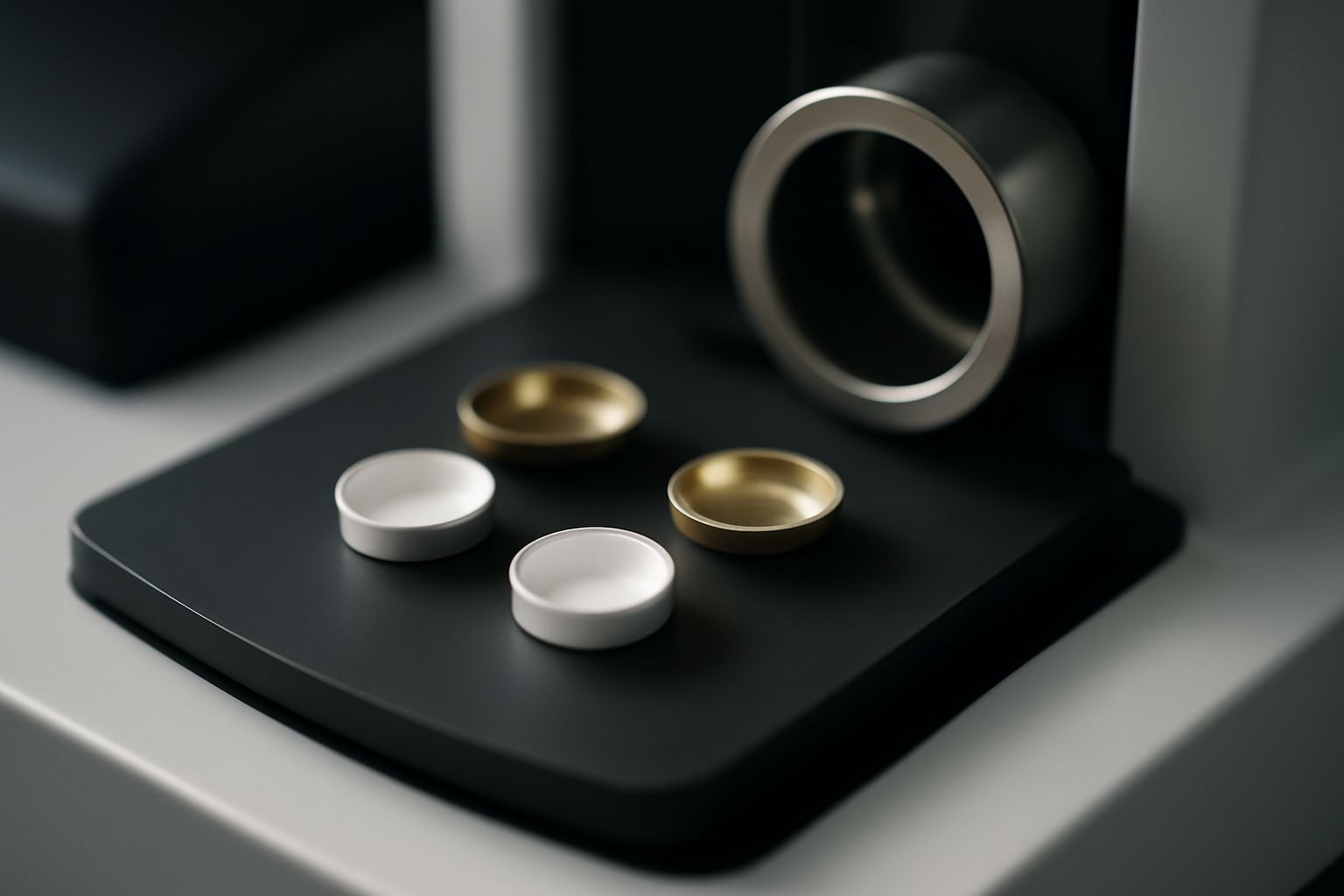Your cart is empty.
shop now
Your cart is empty.
shop now
Incorrect sample pan selection can cause unreliable results or failed tests in TGA-DSC analysis. Each scenario in the lab needs different materials and sealing methods for the best data quality.
The right TGA-DSC sample pan for specific analytical scenarios always depends on the type of analysis. High-temperature, volatile samples, pharmaceuticals, and environmental tests demand different pan materials and lid options for accuracy and safety.

When I work with diverse samples, I always start with the testing goal, expected temperature, and chemical reactivity. Here is my field-tested approach to picking sample pans for the most common analysis situations in modern labs.
Poor heat resistance in sample pans leads to melting, deformation, or sample contamination at extreme temperatures. I have seen tests fail just because the wrong pan was chosen for the heat load.
Platinum or gold sample pans are ideal for high-temperature analysis. Both materials are stable, inert, and maintain their structure even at temperatures above 1000°C.
| Pan Material | Max Temp (°C) | Chemical Stability | Best Use Case | Learn More |
|---|---|---|---|---|
| Platinum | 1700 | Very high, inert | Ceramics, metals, pharma API | Nature |
| Gold | 1000 | High, non-reactive | Sensitive, valuable samples | ScienceDirect |
| Alumina | 1600 | Good, some chemical limits | Oxides, environmental testing | Materials Today |
I check every method’s upper limit and chemical risks before each run. Premium pan materials pay off by protecting both the sample and my instrument over many tests.
Volatile and reactive samples often escape, leak, or react with the pan, leading to loss of data or even equipment contamination. These samples need special attention for safety and accuracy.
For volatile or reactive samples, sealed aluminum or ceramic pans are most effective. Hermetic lids prevent evaporation while ceramic materials handle more reactive chemistries with less risk of pan attack.
| Pan Material | Lid Type | Key Feature | Best For | External Source |
|---|---|---|---|---|
| Aluminum | Hermetic sealed | Prevents vapor loss | Solvents, low-temp volatiles | Instrument catalog |
| Ceramic | Press-fit or sealable | High chemical resistance | Acids, corrosive agents | Lab SOP |
| Gold | Tight crimp | Inert, for sensitive compounds | Analytical reference standards | ScienceDirect |
When samples are expected to release gas or react, I always trial sealed and open pan types side by side. I adjust the final choice based on the lowest sample loss in short pilot runs.
Pharma labs cannot afford data drift or hidden reactivity. Errors here cause costly compliance misses or product returns, so pan choice is especially critical for pharma and QC workflows.
Pharmaceutical applications need high-purity, inert pans such as platinum or gold. Suppliers should offer batch certification and fit guidance for audit trails and standardized analysis.
| Requirement | Advice | Benefit | External Resource |
|---|---|---|---|
| Inert material | Platinum or gold pans | Removes contamination risk | Nature, FDA QA |
| Documented batch | Request QC certificate | Meets audit standards | US Pharmacopeia |
| Sized for API | Low mass, tight tolerance | Better heat flow, repeatable | ScienceDirect |
| Compatible fit | Matched to equipment | Prevents error during runs | Instrument manual |
I check supplier specs and certificates on every order. Good sourcing, plus routine cleaning, keeps pharma analysis compliant and efficient with fewer instrument issues.
Environmental samples are unpredictable and may contain bio waste, salt, or fine particulate that stress different pan features. The wrong pan material or size leads to loss of key sample fractions.
For environmental testing, select durable ceramic or alumina pans that hold up to repeated cleaning and exposure to mixed chemistries. Use open lids for ash/organic studies and tight seals for volatiles.
| Sample Type | Material | Lid Option | Durability | Tip/Reference |
|---|---|---|---|---|
| Soil, waste | Alumina | Open, easy clean | High (reusable) | EPA Method 25B |
| Water, volatile organics | Ceramic | Sealable | Moderate | Thermal analysis |
| Air particulate | Platinum | Tight fit | Highest | ScienceDirect |
My experience says to always test pans for cleaning resistance before starting environmental runs. The best pans survive multiple cleanings and tolerate sample mix variation with minimal warping.
Picking the right TGA-DSC sample pan by scenario improves data integrity, safety, and workflow. Review each analysis’s risks and follow proven guidelines for optimal thermal analysis results.
Contact technical support: info@redthermo.com